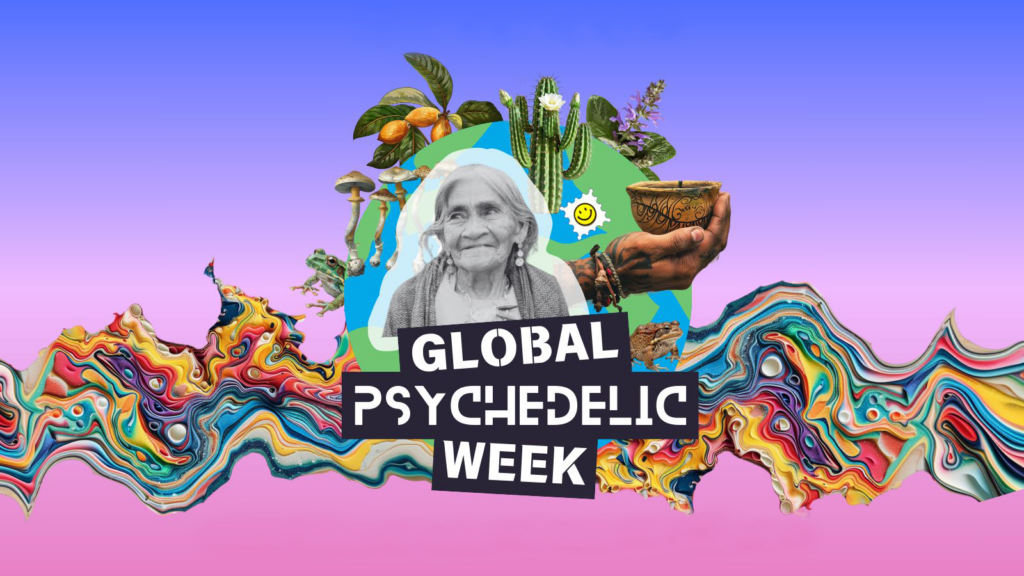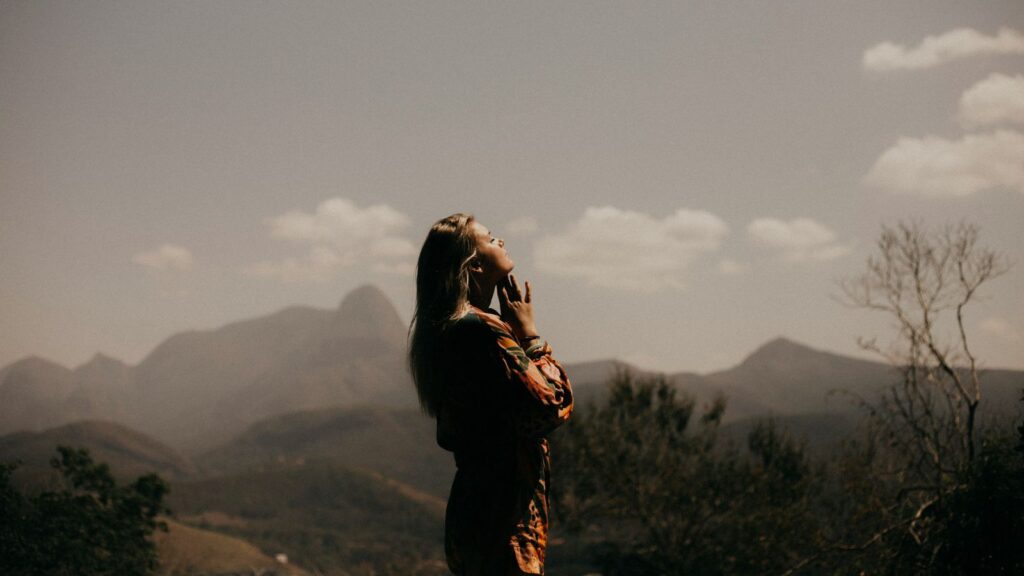Wat a minute, am I rock and roll? Yes and no.
As Soupy Sales and White Fang, circa 1965, would ask, “What do we mean by that!?” “Yeah. What do we mean by that!?”
We mean that rock and roll and the being-ness of moi are one and the same, but it is a troublesome identification and it requires a sense of history to make it tolerable. Let me explain.
Everybody, all humans, came out of Africa. There is no longer a serious debate about this. You, I, and our various neighbors came out of the lower east side of the African continent. Let’s start there.
Our foremothers and forefathers began walking out of Africa 65,000 years ago, left, right, left, right, one, two, one, two, stepping northward along the beaches carrying babies, to populate first southern Asia, China, Java, and later Europe. At first we all had dark skin, and later, in the places where sunlight was less intense, skin pigmentation became less too, so that honkies could get vitamins from the limited light.
That mama and papa had music at the start of it goes without saying. There are all kinds of speculations in the literature about how that happened; such wonderings are pointless and at the same time many of them could be more or less true. Darwin thought that music originated as mating calls and territorial tags. OK. Right. So what? The problem is that differentiating the calls of birds from, say, the symphonies of Beethoven, has become a false distinction framed in an underestimation of the bird, on the one hand, and an overestimation of the bourgeois male, on the other. We don’t need to go there. And Ludwig noted the songs of birds in his sixth symphony, apparently without worrying about his position in any grand scheme vis a vis “lower” species, and this makes him a rocker. Again, Soupy says, What do we mean by that?, etc.
Listen to that first movement, one, two, one, two, with a touch of swing, where the three comes in. There is a kind of stuttering in the strings, where one, two, one, two becomes twelve or two sixes. This either makes sense to you or it doesn’t, based on what you know of Ludwig and the blues, but the point is that beats can be divided by three as well as two. In Europe, classically, we have tended to use either twos or threes at any given time, but in Africa, in spite of all the variations of musics across hundreds of ethnic groups, playing two and three at the same time became a kind of universal underlying musical characteristic.
Scholars have speculated variously about why this is, and we mustn’t take these sorts of speculations about ye olde origins too seriously, but I like the one about mama swinging the baby one, two, one, two, while pounding turnips on a cycle of three. According to this theory, babies grow up in Africa experiencing polyrhythms in the movements of the mother more or less constantly, because in these cultures, babies spend most of their time on the body of the mother as she goes about her business. And of course there is music in that environment that expresses polyrhythms, and the kids absorb that too. Latin American musicians, particularly Cubans and Puerto Ricans, call the combined rhythm of three and two clave, and it is the basis of their music. One, two, three, one-two.
I once jammed on stage with the Nuyorican poet Miguel Algarin, and started by snapping my fingers in the clave rhythm, and the bongo player got in right away with something very complicating and, to my ears, very African, and Miguel immediately began yelling for Chango, one of the west African deities who followed the slave ships across the middle passage to the Americas. Three against two is that evocative, that culturally specific, and immediately goes to the god realm one way or another.
So why was African polyrhymical practice, as well as African religion, retained in Latin America and not so much in Anglo America? Broadly, there are two answers to this. One has to do with the conditions of slavery being different in the two Americas, and the other has to do with religion. I’ll take the religious explanation first, because it’s the shortest.
The Latin countries are Catholic, and the north is predominantly Protestant. Catholicism, though fairly rigid in its dogma, has exhibited more flexibility in its tolerance for some native cultural practices than has Protestantism. Drumming persisted in the Spanish Caribbean, but in the Protestant north, it was made illegal before the American Revolution. It is worth noting in this regard that the location in North America where African musical customs had their strongest persistence — New Orleans — had been a Catholic town.
The slavery issue is more complicated, but it comes down to two main factors.
1) In North America, slaves were shipped into large ports, like Charleston, and then dispersed over a vast territory. In the Caribbean, the area of dispersal was much smaller. This meant that in the islands, slaves from Dahomey, for example, might be concentrated in a small area, rather than being mixed in with slaves from other regions. Under such circumstances, particular customs had a better chance of persisting over time.
2) The working environment in the North was not as harsh as in the Caribbean, where climate and disease took a heavier toll. This meant that the Caribbean plantations required “fresh” supplies of slaves from Africa on a regular basis to replace those who had died. In the north, slaves tended to live longer so that, for example, by the time of the American Revolution, the majority of slaves in North America were American born, thus making the continuation of old customs less likely.
In all places where European and African peoples lived in close proximity, there was cross-fertilization. Whites learned to grow rice from blacks, for example. But in a master-slave structure, it is to be expected that the burden of adaptation is on the slave, not the master. The master has the privilege of freely picking and choosing from the slave’s way of doing things for his own profit and advantage. The slave adopts major aspects of the master’s culture, such as language and religion, not as a matter of choice but of necessity. North American slaves had to learn English. And those who were able to adapt to the master’s music found some advantage there, fiddling in the master’s ballroom, one assumes, being more pleasant than field work. It took some time before the master got around to taking on the rhythms of the slave’s music, but at a certain point, it became advantageous to the dominant class to finally adopt, on a large scale, elements of the African style in music.
By the mid-nineteenth century, whites performing in black-face minstrel shows had adopted the banjo, an instrument with African origins that had been played by Africans in the Americas from early days, and the Civil War served to popularize the instrument further among white musicians. But the music of minstrelsy, written by northern, city-dwelling whites with little or no exposure to real southern black culture, initially bore more resemblance to Scottish ballads than to African American song.
Hymn singing during the great religious revivals of the period did serve to meld black and whites styles of music to some extent, since call and response and repetitive songs somewhat akin to the African style were easily learned and performed by large gatherings, and given the fervent celebration of the holy ghost, segregation receded in this context to a degree unprecedented in other social contexts.
The inoculation of the white population by the pseudo-Afric affectations of white artists in blackface makeup had a couple of notable effects. One was that it served to humanize blacks for the white masses. This seems counterintuitive, because minstrelsy was a parody based on a stereotypical fantasy, and might rightly be considered by African Americans an insult and a rip-off which, rather than improving on racism actually perpetuated it, but the effects of cultural phenomena are complex, and not all are so negative.
American popular songs had always carried a strain of sentimentality. Mass market popular music, in the sense of a modern pop culture business phenomenon, got its start at about the time of the American Revolution. The memory of that great founding upheaval was very real for those who experienced it first-hand and it persisted in family legends, fostering a founding mythos of the nation that featured the struggle of ordinary individuals against seemingly invincible powers. This was given a boost by the Romantic urge that emerged in the arts in general in the post-Revolutionary period in Europe and America. But the American audience in particular had a taste for songs that dealt with the struggle of the heroic underdog and the sadness of the soldier, sailor, or poor boy a long way from home. One result of this sentimentalism was that in minstrelsy, after the initial phase of mocking a stereotyped happy-go-lucky rural idiot character had run its course, there emerged blackface characters who displayed humanizing emotions of love and loss. Thus minstrelsy, which began by sanitizing and even idealizing life under slavery, played a role in abolishing it.
The other effect of minstrelsy that I want to note here is the way it fed back into black musical practice. Mistrelsy emerged roughly twenty years before the Civil War and emancipation. So by the time that large numbers of free blacks were moving into the labor market, the minstrel style and all its conventions had been well established. This meant that black performers who wished to go into show business had to adopt the fake “Ethiopian” accent and stylized shuffle and mannerisms falsely attributed to African Americans. In a final ironic twist, they had also to adopt the blackface makeup, because key to the effect was the uniform coloration of the performers’ faces. A dozen white guys in black makeup are all the same color, but a dozen black guys out of makeup are not. So blacks had to learn black style from white artists who had made it up with little real reference to the way real African Americans actually behaved.
By the late nineteenth century, a free black middle class had emerged, and from its ranks came a number of classically trained musicians, the best known of whom are probably Scott Joplin, who popularized ragtime music, and W. C. Handy, whose adaptation of a song he learned from a country singer (St. Louis Blues) marked a milestone in the evolution of commercial popular music.
So we have two interlocking musical trends here, and for two hundred years they have happened in the context of a commercial popular culture. One is Africans adopting European music and blending it with whatever elements they were able to retain from their original cultures, and the other is whites taking up elements of African musical practice and carrying it over into European styles. It’s a feedback loop that has been going on for centuries, it is the engine of American pop.
The blues is an example of the two trends meeting in a commercial popular environment. I realize I’m on dangerous ground here, because the blues, like most folk-based musics, carries a sense of a pure strain that is prior to, beyond, and even opposed to a perceivedly co-opting and corrupting commercialism. The simple answer to this is that labels such as “blues,” “jazz,” and even “folk” are themselves commercial categories generated and propagated for purpose of marketing. Duke Ellington is supposed to have said that there are only two types of music, good and bad. Once we get beyond this and into names of styles, one way or another we’re talking commerce. Robert Johnson probably referred to what he was doing as “the blues,” but he was selling it, no? The ethnomusicological literature is full of conversations with traditional singers who have no particular label for what they do. What do you call that? — “I call it a song,” or “it is the story of a great hero and his bride.” It aint “folk music” until it comes time to market it.
The point is that it is in the American marketplace that black and white styles most fully merged, beginning with blues and jazz, and moving into rock and roll, which is where I came in. American music is a hybrid, and it happened from the start in an ethnically mixed environment without which it would not have happened, but it happened in an environment of oppression, and therein lies a problem, particularly for a teacher of music, such as myself, and a white musician, ditto.
Now I have to go into the balancing act that occupies me every time I teach this stuff, and particularly when I teach a course in song writing, as I have now more or less every year for a decade, and where, inevitably, half the males in class are white guys from the burbs who, in the presence of a drum beat, instantly assume the peculiar, rounded vowels and crisp consonants of thickest black-Bronx English. Why does this make me cringe?
Questions multiply. Am I uncomfortable with this because I see it as a sign of ignorance? Am I assuming that if they knew where this music was coming from, if they understood what it was, they wouldn’t assume that voice? And when I play a blues-inflected solo on the guitar, am I doing the same thing?
For more than a century, racism and segregation permitted white artists to present as their own styles of music innovated for the most part in the black community. This allowed Irving Berlin to plagiarize Scott Joplin with impunity, and George Gershwin to be marketed as “the King of Jazz.” Elvis was a particularly good example of the musical consequences of segregation. The producer who discovered him, Sam Phillips, was looking for a white singer who sounded black, in order to market a hybrid style of music with strong black roots to a white segregationist audience.
Again, as with minstrelsy a hundred years earlier, the effects were not all negative for the black side of the non-equation. First of all, segregated communities provided the conditions for intense experimentation in black musical practice that might not have happened at all in an integrated society. Also, the segregation of the recording industry allowed the development of black entrepreneurship in music that culminated in the successful cross-over of black artist into the mass market, as with Motown Records in the 1960s.
Michael Jackson, may he rest in peace, is a particularly good example of the hybrid, on many levels, from his musical style to his success and of course his efforts to, shall we say, deracialize his appearance. The fact that as late as the 1990s, he became the first black artist to regularly play the rotation at MTV is testament to the longevity of segregationism in the US. Things continue to improve, seemingly, and even the premature label of “post-racial” America is in some ways a positive sign, but conditions are still far from ideal, and conditions of exploitation continue.
So does all this mean that my white students shouldn’t be rapping? Does it mean I shouldn’t be playing rock and roll? Are the two things the same? Rock and roll is substantially hillbilly music, which has roots in the British Isles, where I was born. And I learned it from white musicians before I was even aware of its black roots in any meaningful way. But is rap the same thing? Is it more black than rock? And does any of this matter? Doesn’t music belong to everyone? And maybe the fact that we bought all this music justifies our sense of owning it? Well, I’ve come to a position on all of this, sort of.
In graduate school, when I was taking my oral exams for the doctorate in music, I was asked the following question: What if you were teaching a class on jazz, and someone asked what right you, as a white man, had to teach black music, what would you do?” I found myself saying that we would have to make that question, the issues it raises, a part of the course content. That’s where I’m at with this.
I don’t rap; in performance, I don’t pretend to have an accent that I don’t use in my normal speech; I don’t tell my students they can’t co-opt other people’s musical styles, but I do try to understand where my music comes from and help my students to understand where there’s comes from, and to make issues of appropriation part of the curriculum.
In a culture where participation in indigenous peoples’ spiritual practices can be arranged for you by a travel agent, it is important to understand the history of the things we choose to practice, particularly with regard to historical conditions of exploitation, to respect the traditions behind all cultural practices, and to make decisions on what and how to practice in light of these considerations.
P.S. I want to note here that I probably would not publish this piece in a venue where readers couldn’t easily respond to it with comments. The cool thing about this format is that RS allows us to experiment, to put out ideas that are not fixed and may never be settled, and to learn from the community’s response. I look forward to readers’ feedback.














